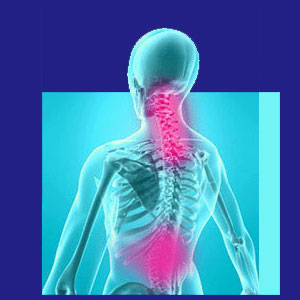
Whiplash neck injury describes tissue damage that is caused by the hyperflexion and hyperextension of the neck region. Whiplash is most commonly associated with motor vehicle collisions, but can actually be caused by a wide range of traumatic occurrences that have the potential to snap the neck forward, backwards, or both in rapid succession.
The neck anatomy is designed to move throughout a wide range of motion, but the limits of this range can be tested by any traumatic event. Whiplash is a perfect example of a scenario where the forces exerted on the neck surpass the comfortable and safe range of motion enjoyed by the region, potentially causing injury when the neck is thrown forcefully forward, backwards or sideways.
This examination delves into whiplash-related injury to the cervical spine and surrounding musculature. We will determine the causes of whiplash and the types of traumas that may be enacted in the anatomy of the neck. Whiplash injury is far more common in developed regions of the world and is especially prevalent in litigious societies that benefit from social programs that pay victims who are disabled with certain types of injuries. Therefore, we will also cover the medic-legal issues associated with whiplash in the final section of this editorial essay.
Causes of Whiplash Neck Injury
Whiplash is typically the consequence of a car accident. It is especially common when a vehicle is struck from the rear while it is standing still. The motion of this type of collision will throw the occupants forward suddenly, only to be restrained by the safety belt, which in return, forces them backwards with virtually equal force as the original impact. Since the body is held firmly against the seat, but the head is unrestrained, the neck will suffer hyperflexion, then hyperextension. This basically means that the head will be thrown forward, then backwards, often past the point of the typical range of motion. However, whiplash can come from others types of car crash scenarios, as well.
Whiplash neck trauma is certainly not limited to motor vehicle collisions. There are many other potential causes of neck damage due to hyperextension or hyperflexion events, including any or all of the following circumstances:
Sports injuries might entail whiplash injury. Rough sports, such as American football, rugby, wrestling, martial arts and gymnastics all have inherent risks for causing whiplash. However, atypical events in even less risky sports might still create the ideal circumstances for whiplash to occur from virtually any rigorous pastime.
Significant falls might cause whiplash, particularly when the person falls forward or backwards and might have their fall partially broken in the body region by some obstacle, while the head snaps forcefully in the direction of momentum.
Acts of violence are common causes of whiplash. Blows to the head, forceful head pushing or being thrown to the ground can all enact significant injury to the neck region.
Varieties of Whiplash
Usual whiplash injuries do not cause any documentable spinal injury. Instead, the injury sustained occurs to the soft tissues, including the muscles, tendons and ligaments in the neck, typically in the form of minor strain.
Soft tissue strain describes a scenario wherein the fibers of these structures suffer small rips and tears, causing pain and inflammation. In the worst cases, soft tissues might actually be torn free from one another or from their skeletal attachments. These types of whiplash events are rare and may require drastic or surgical treatment to repair.
Spinal injury is possible when the force of whiplash is particularly severe or when the individual anatomy of the cervical spine has already been compromised by disease, age-related degeneration or previous injury. Since cervical spinal degeneration is universal in adults, this represents a usual scenario, rather than an exceptional case circumstance.
Spinal injury might affect one or more of the intervertebral discs, causing an atypical bulge, herniation, rupture, extrusion or sequestration. Since many of the cervical discs are often desiccated in adults, the likelihood of suffering an intervertebral pathology is commonplace when serious force is applied to the neck.
Whiplash can also affect the vertebral bones themselves, potentially causing a fracture or one or more vertebrae. This occurrence is more likely to happen when the victim is elderly, suffers from low bone density or has already suffered a hairline compression fracture in one or more spinal bones.
Finally, the worst cases of whiplash might cause spinal nerve or spinal cord trauma. Cervical spinal cord injury is one of the most serious health threats a person can endure, often causing widespread and permanent motor and sensory deficits. Some extreme cases of spinal cord injury may prove fatal immediately or with the passage of time.
Medico-Legal Ramifications of Whiplash Neck Injury
Whiplash is a fascinating topic from a medico-legal perspective, since a variety of international clinical studies have examined the occurrence of hyperflexion/hyperextension neck traumas and found the reported number of cases to be closely related to the potential monetary gain enjoyed by the victim.
In essence, in world regions where people are not monetarily rewarded for suffering whiplash, the incidence of these types of injures is very low, despite a proportionate number of car accidents and similar injurious incidents taking place. Meanwhile, in areas of the world where whiplash litigation is commonplace, the report of these types of neck injuries reaches epidemic levels, sometimes affecting a considerable portion of society as a whole.
While some doctors blame this interesting phenomenon on the secondary gain theory of chronic pain, this is sometimes an insulting and incorrect presumption. Instead, the cause of many medico-legal pain syndromes may be primary gain linked to the nocebo factor of the injury itself, the medical treatment received and the legal guidance rendered. We cover the back and neck pain litigation process in unrivalled detail on all the sites of The Cure Back Pain Network and recommend that interested readers should search for all our articles on the topics of lawyers, lawsuits and litigation.





